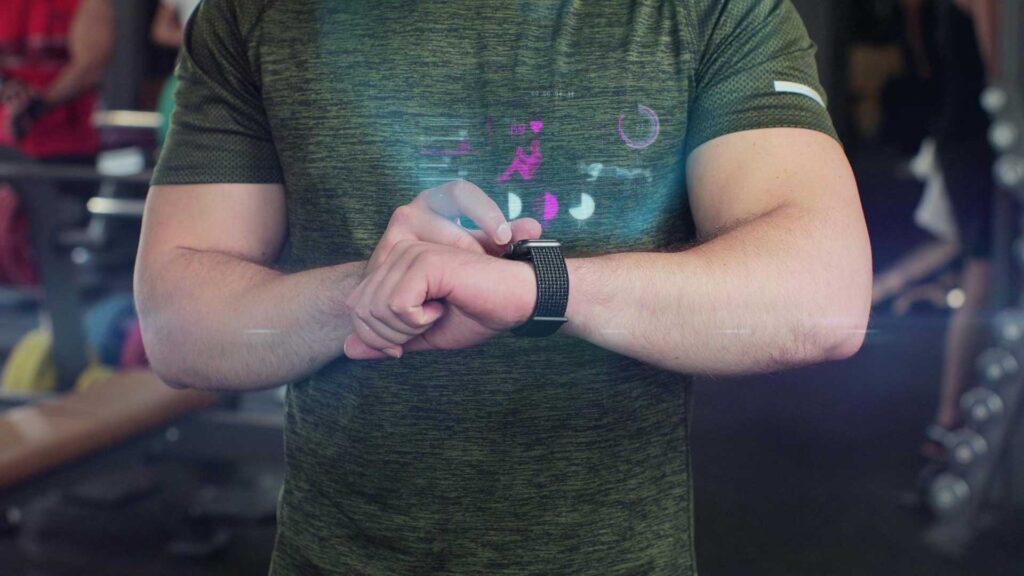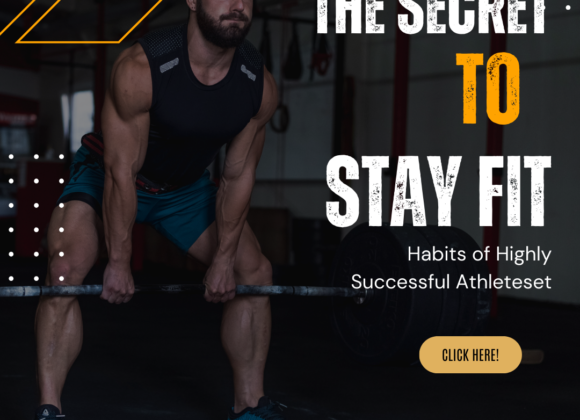Fitness trends come and go, but this year’s top trends are showing strong staying power. Each one brings something new to the way people approach their health and wellness goals. From virtual workouts to mindful exercise practices, these trends meet a variety of needs, making fitness more accessible, convenient, and holistic. Let’s break down the top 5 fitness trends everyone is talking about and see why they’re becoming the new essentials in fitness routines.
1. Virtual Fitness Classes
Virtual fitness classes exploded in popularity over the past few years, and this trend shows no signs of slowing down. Fitness enthusiasts and beginners alike are finding value in being able to work out from home without the time and logistical challenges of getting to a gym. If you are looking for an expert and certified trainer to help you with virtual fitness class then message us on Instagram. Here we provide virtual training classes to hundreds of people around the globe.
Why Virtual Workouts are Here to Stay
Virtual workouts became a lifeline for many during global lockdowns, offering a flexible alternative to traditional gym settings. Today, they provide the same advantages, allowing users to access professional trainers and unique workout styles from their living room. For people with busy schedules or those who prefer a private workout environment, virtual classes are ideal. Additionally, they cater to all fitness levels, making it easy for beginners to start without feeling intimidated.
Benefits of Virtual Fitness
Accessibility and Convenience
The best part about virtual classes is that you can join from anywhere, whether you’re in a different city, a small apartment, or even on vacation. This ease of access means that fitness fits around your life rather than the other way around.
Wide Variety of Classes
Online fitness platforms host thousands of different classes—everything from high-energy Zumba sessions to calming yoga, intense strength training to soothing meditation. This variety allows people to explore and find workouts they enjoy, which keeps motivation high and boredom low.
2. Wearable Technology
Wearable technology has transformed the way we view personal fitness. From counting steps to measuring heart rates, wearables provide users with real-time data that helps them understand and optimize their workouts.
The Rise of Fitness Trackers
Fitness trackers have become an integral part of fitness routines. With brands like Fitbit, Garmin, and Apple constantly improving their devices, more people are embracing these compact but powerful gadgets. They help users stay accountable by tracking progress, setting daily goals, and providing reminders to stay active.
Key Features in Modern Wearables
Heart Rate Monitoring
Heart rate monitors in wearables allow users to track their heart rate zones, ensuring they’re working out at the correct intensity for their fitness level and goals. This feature is valuable for both high-intensity workouts and recovery days, giving insights into how hard your body is working.
Sleep and Recovery Tracking
Sleep is just as crucial as physical exercise in any fitness routine. Modern wearables analyze sleep quality, including stages like deep, light, and REM sleep. This data helps users understand how well they’re recovering and may encourage better sleep habits, which are essential for overall health.
Why Wearables are More Than Just a Trend
Wearable technology extends beyond fitness; it’s part of a larger wellness journey. These devices encourage a balanced lifestyle by providing insights into activity levels, rest, and even stress management, helping users cultivate a more mindful approach to health.
3. Mindfulness and Mental Wellness
Fitness is no longer just about physical strength; mental wellness has become a key component of many routines. Mindfulness practices have made their way into fitness classes and gyms, encouraging individuals to focus on their mental well-being alongside their physical health.
Integrating Mindfulness in Fitness
Mindfulness in fitness promotes an approach that focuses on breathing, presence, and mental clarity. Workouts that integrate mindfulness, such as yoga, tai chi, and mindful meditation, help improve concentration and can make fitness a more enjoyable and reflective experience. Even in high-intensity environments, some classes encourage mindful breathing and focus to create a well-rounded workout.
Benefits of a Mindful Workout
Stress Reduction
Mindful workouts help manage stress by combining physical movement with mental relaxation techniques. These workouts encourage deep breathing, which can reduce cortisol levels (the body’s primary stress hormone), leading to a greater sense of calm.
Improved Focus and Resilience
When practicing mindfulness during exercise, individuals develop better focus and resilience, both mentally and physically. This heightened focus translates to daily life, where people are better able to manage challenges, stay centered, and maintain mental clarity.
4. Functional Fitness Training
Functional fitness is about training the body for real-life activities, not just lifting weights or running on a treadmill. This form of exercise focuses on movements that mirror daily tasks, making the body stronger and more efficient in real-world applications.
What is Functional Fitness?
Functional fitness exercises focus on movements that strengthen multiple muscle groups and build coordination, stability, and flexibility. Rather than isolating muscles, functional fitness encourages compound exercises that train the body to work as a cohesive unit. This includes moves like squats, lunges, planks, and kettlebell exercises.
The Benefits of Functional Movements
Real-Life Application
Functional fitness strengthens the muscles used in everyday tasks, like lifting objects, bending down, or reaching overhead. It promotes balance and coordination, making these daily activities easier and safer.
Injury Prevention
Because functional fitness targets stability and mobility, it helps prevent injuries. Exercises are designed to improve core strength and joint flexibility, which reduces the likelihood of injuries in both daily life and more intense workout sessions.
5. High-Intensity Interval Training (HIIT)
High-Intensity Interval Training, or HIIT, remains a favorite in the fitness world due to its efficiency and effectiveness. HIIT workouts alternate between short bursts of intense exercise and brief recovery periods, making them a time-efficient option that still delivers great results.
Why HIIT is Still a Fan Favorite
HIIT workouts are incredibly efficient, often taking only 15 to 30 minutes. They can be done with minimal equipment and space, making them perfect for people with busy schedules or limited gym access. Additionally, HIIT has been shown to improve cardiovascular health and boost metabolism long after the workout is over.
The Science Behind HIIT Workouts
Benefits of HIIT for Busy Schedules
One of the most appealing aspects of HIIT is that it’s time-efficient. You can get a full-body workout that burns calories and builds endurance in less than half an hour, making it easy to fit into even the busiest day.
HIIT for All Fitness Levels
HIIT workouts can be adapted to suit any fitness level. Beginners can start with modified, low-impact moves, while more experienced athletes can ramp up the intensity. This adaptability makes HIIT an inclusive workout trend that anyone can try.
Conclusion
These fitness trends reflect a growing desire for flexibility, accessibility, and holistic wellness in fitness routines. From tech-driven solutions like wearables to mind-body connections through mindfulness, each trend has a unique role in today’s evolving fitness landscape. By understanding and embracing these trends, people can create routines that not only support physical health but also nurture mental well-being and overall lifestyle goals.
FAQs
1. What makes wearable technology a fitness trend?
Wearable technology has redefined fitness by offering users real-time data on their health and physical activity. These devices help track progress, encourage consistency, and offer insights into sleep, heart rate, and recovery, making them an integral part of modern wellness routines.
2. Can beginners try High-Intensity Interval Training?
Absolutely! HIIT workouts can be tailored to various fitness levels, with modifications available to suit beginners. This adaptability ensures everyone can benefit from HIIT’s efficiency and intensity.
3. Are virtual fitness classes suitable for all fitness levels?
Yes, most virtual platforms offer classes that cater to different experience levels. Beginners can start with low-impact sessions, while more advanced users can take high-intensity classes.
4. How does mindfulness impact physical fitness?
Mindfulness enhances physical fitness by improving focus, reducing stress, and encouraging a holistic approach to health. By staying present during workouts, people often experience greater satisfaction and see more lasting results.
5. Is functional fitness training good for weight loss?
Functional fitness can support weight loss by improving overall muscle strength and endurance, which increases metabolic rate. Full-body movements in functional exercises burn calories and promote lean muscle, aiding in sustainable weight management.
You might also like:
The 7-Minute Workout: Can You Really Get Fit Fast?
The Secret to Staying Fit: 10 Habits of Highly Successful Athletes
Think Like a Millionaire: The Money Mindset You Need for Success
10 Proven Money-Making Strategies You Can Start Today!
10 Must-Have Wardrobe Essentials Every Man Needs in 2024















